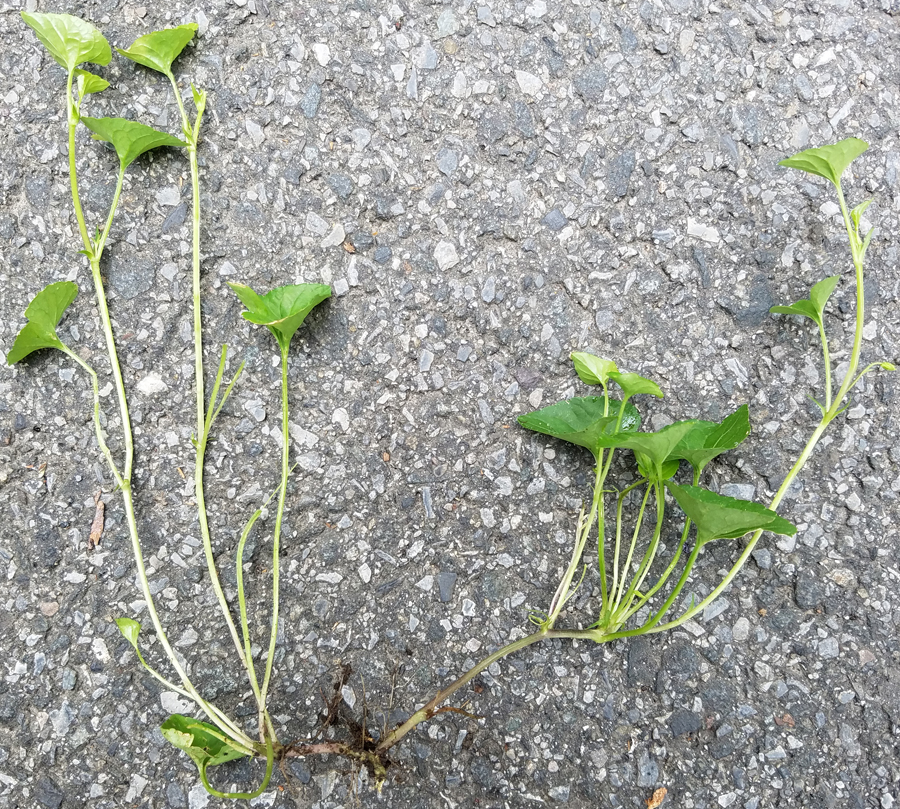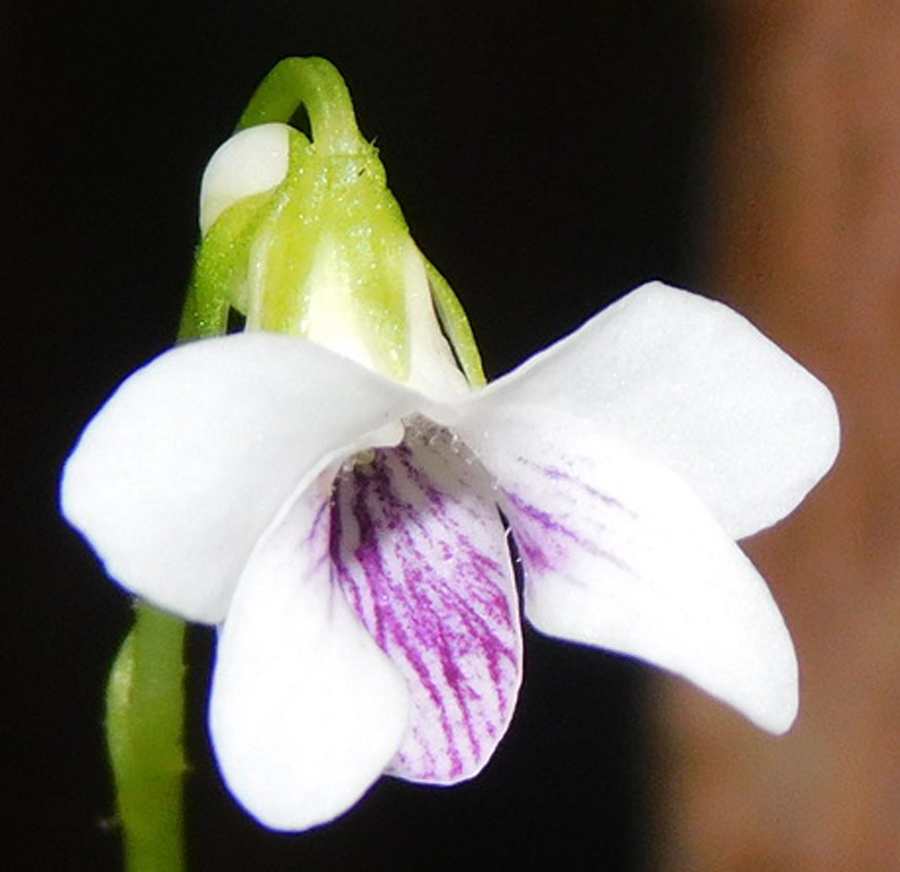Viola arcuata Blume
Common names:
None in English
Synonyms:
Viola arcuata Blume, Bijdr.: 58. 1825.
[Several synonyms for Asian populations, not noted here]
Description:
Caulescent perennials from somewhat slender prostrate rhizome, reportedly also stoloniferous, stems branched and decumbent in their basal half and commonly rooting at lower nodes, the distal portions ascending, ≤ 35 cm tall; stems, cauline leaves and peduncles light to medium green, basal leaves deeper green, glabrous or the lower surface sparsely puberulent along veins; leaves cauline and basal, cauline distributed along stem; stipules free, entire to remotely denticulate; leaves ascending or spreading, leaf blades undivided, largest ≤ 30 × 55 mm, reniform-deltate, base shallowly and broadly cordate, margins shallowly crenate or low-serrate, eciliate, apex broadly rounded to obtuse (leaf blades thus lunate); chasmogamous flower ≤ 8 mm; calyx glabrous, eciliate; lowest sepals ovate-lanceolate, acuminate; auricles very short and entire, not elongating in fruit; corolla white to pale violet, throat white; spur short, slender, ca. 2 mm, white to pale violet; lateral petals sparsely bearded with narrowly linear hairs or glabrous, spurred petal glabrous; cleistogamous flowers produced after chasmogamous; capsule 6–8 mm, green drying tan, unspotted, glabrous; seeds ca. 1.5 × 1.0 mm, yellowish, unspotted, with a basal membranous wing on one side; 2n=24.
Similar species:
This species is distinctive in its broadly reniform-deltate cauline leaves with somewhat remotely low-serrate margins, but the sometimes white corolla, short spur and basally reclining stems could be confused with V. striata if the proportionally broader leaf blades were ignored. The commonly node-rooting basal portion of the stems and slender entire to remotely denticulate stipules would distinguish this species.
Ecology:
In its native range this species is said to inhabit "Moist and marshy places, grasslands, grassy places on mountain slopes, thickets, forest margins, fields, alongside houses" (Chen et al. 2007); in and around New York Botanical Garden the violet is common in moister well-watered areas of lawns; in a park further south in New York City and another park along Skyline Drive in New Jersey the violet grows in planting beds or pots, presumably brought in with nursery stock or bedding plants.
Distribution:
Native to east temperate and tropical Asia, confirmed as the first western hemisphere reports by Rob Naczi and Harvey Ballard in 2022 from observed populations and iNaturalist posts.
Rarity:
None.
Phenology:
Chasmogamous flower in May [in our range], fruiting data not available.
Affinities:
This species belongs to sect. Plagiostigma, subsect. Bilobatae (W.Becker) W.Becker.
Hybrids:
None.
Comments:
Although this is a newly discovered introduction, it is well established in lawns in and around the New York Botanical Garden and in planting beds and pots elsewhere in New York City and a park along Skyline Drive in New Jersey. These are the first reports of the species in the New World. The description was composed from plants observed in the lawn at the New York Botanical Garden, specimens in NY, and from Chen et al. (2007). The "Plants of the World Online" website calls this species V. hamiltoniana D.Don, placing the name V. arcuata Blume into synonymy.
Literature Cited:
Chen, Y. S., Y. Quin-er, H. Ohba, and V. V. Nikitin. 2007. Violaceae. In Flora of China. Science Press, Beijing and Missouri Botanical Garden Press, St. Louis, Missouri, Vol. 13, pp. 74–111.

Summer vegetative habit at New York Botanical Garden by Harvey Ballard

Plants showing prostrate node-rooting stems at New York Botanical Garden by Harvey Ballard

Chasmogamous flower by Tyler Fishman

Map by Biota of North America Program